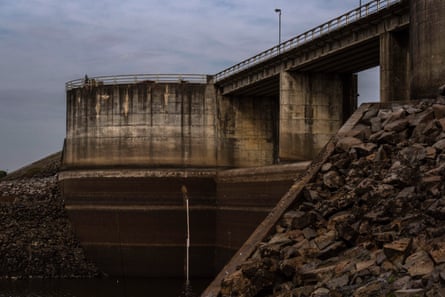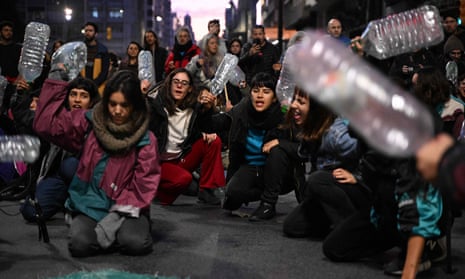A plan to build a Google data centre that will use millions of litres of water a day has sparked anger in Uruguay, which is suffering its worst drought in 74 years.
Water shortages are so severe in the country that a state of emergency has been declared in Montevideo and the authorities have added salty water to the public drinking water supplies, prompting widespread protests.
Critics claim that the government is prioritising water for transnationals and agribusiness at the expense of its own citizens. Daniel Pena, a researcher at the University of the Republic in Montevideo, said: “Only a tiny proportion of water in Uruguay is used for human consumption. The majority is used for big agro industries, such as soya, rice and wood pulping. Now we have Google planning to use enormous quantities of water.”
The search giant has bought 29 hectares (72 acres) of land to build a datacentre in Canelones department, in southern Uruguay. The centre would use 7.6m litres (2m gallons) of water a day to cool its servers – equivalent to the domestic daily use of 55,000 people, according to figures from the Ministry of Environment obtained by Pena through legal action. The water would come directly from the public drinking water system, according to Pena.
Uruguay’s industry ministry says these figures are out of date because the company is revising its plans, and the datacentre will be “a smaller size”.
In a statement, Google said the hub would serve Google users worldwide, processing requests for services such as YouTube, Gmail and Google Search. “The Uruguay data center project is still in the exploratory phase, and Google’s technical team is actively working with the support of national and local authorities. We expect preliminary numbers (like projected water consumption) to undergo adjustments. At Google, sustainability is at the core of everything we do, and the way we design and manage our data centers is no exception,” it said.
Extremely low rainfall levels and record high temperatures have left Uruguay’s main reservoir dry and rivers depleted, and to make up the supply, public water authorities have started taking water from the Rio de la Plata estuary, where seawater mixes with freshwater, giving tap water a salty taste.

The foul-tasting tap water has caused shock waves in a country which has the highest GDP per capita in South America and was the first country in the world to declare access to water a constitutional right.
The government has doubled the permitted levels of sodium chloride in tap water and is advising pregnant women and people with serious health conditions not to drink it. Parents have been advised to prepare baby milk with bottled water and not to add salt to children’s food.
Uruguay’s president, Luis Lacalle Pou, has announced emergency measures such as lifting taxes on bottled water and distributing two litres (a half gallon) of free water a day to 21,000 poor or vulnerable families. He has also promised to build a new reservoir in 30 days.
after newsletter promotion
But public anger remains widespread. “Tap water is virtually undrinkable. But there are approximately 500,000 people who can’t afford to buy bottled water,” said Carmen Sosa of the trade union-backed Commission to Defend Water and Life. Its slogan, “This is not drought, it’s pillage,” is scrawled on walls across Montevideo.
“More than 80% of water goes to industry, like soya and wood pulping. Yes, we have had a shortage of rain, but the drought has simply shown the problems with our economic model. We can’t concentrate resources in a few hands,” said Sosa. “Water for human consumption has to come before profit.”
Last month, the world’s biggest pulping plant started operations in Uruguay, the third such mill in the country. The new plant, run by the Finnish company UPM to create raw material for paper, is forecast to use 129.6m litres (34m gallons) of water a day, and releases effluent into a local river. UPM said it treats the effluent before release, and constantly monitors the water quality in the Río Negro.
A UPM spokesperson told the Guardian: “Uruguay is facing the worst drought in a century. Within this framework, UPM’s operations in Uruguay have no connection with the drought that is occurring. The drinking water consumed in Montevideo comes from the Santa Lucía River. None of the pulp mills installed in Uruguay are linked to this river. This challenging climatic situation cannot be associated in any way with the forestry sector.”
